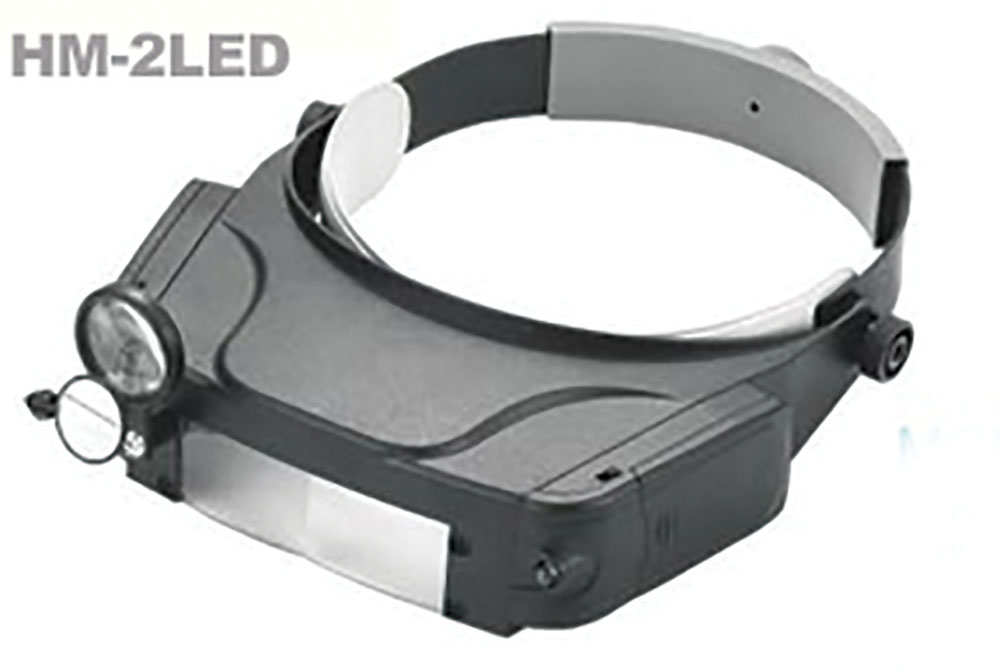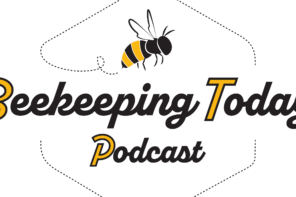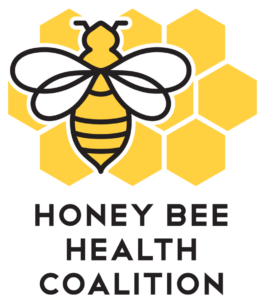They say death and taxes are unavoidable. There is a third item that can be added to this list; physical changes whether due to aging or disability.
This article is written for any beekeeper who is encountering physical barriers that affect their ability to continue keeping bees. These barriers can come in the form of mobility issues, arthritis, diminishing strength, back problems, eyesight or other unexpected challenges.
Beekeepers are resourceful and find creative solutions to continue keeping bees. Aging or other obstacles can be addressed on multiple fronts: lifestyle, equipment and management changes. Some of the solutions can be put into practice now and some will take planning and time to implement. The objective of this article is to provide practical information to help beekeepers adapt to changing physical conditions thus allowing them to continue doing what they love.
If you use Google to search for “common aging changes” you will find an abundance of information about how the body changes overtime. Sight, memory, bones, joints and muscle strength, are obvious changes as we age. Put another way, age or disability can get in the way of keeping bees. We will describe some of the more common barriers beekeepers encounter followed by possible solutions.
Are the eggs getting smaller? No; it’s just your eyes. Presbyopia is a slow loss of ability to see close or small objects. It is a normal process that happens as we get older. Having to hold a frame at arm’s length is a sign of vision loss. Reading glasses usually fix the problem. However, in some situations beekeepers need greater visual acuity. Queen rearing is an example. Finding 24-36 hour larvae when grafting can be next to impossible without extra help.
One immediate solution to reduced vision can be found as close as the internet. Randy Oliver of Scientific Beekeeping has advice for those over 40, “I recommend grafting in a very dark room, wearing a jeweler’s type head-mounted magnifier of 3x-4x power, plus a focusable headlamp (battery powered). Put the headlamp as close as you can between your eyes, and aim the spot directly where you are looking.” This is a piece of equipment worth splurging on; get visors with good optics and a built in LED light source. I used to struggle finding 24 hour larvae when grafting. It is fun again now that I can see. The LED light is very bright and does not give off larvae-drying heat. An added bonus is that I can use this visor for reading the finest of fine print.
“When was I supposed to release that new queen?” Mayo Clinic points out that our “Memory tends to becomes less efficient with age. It might take longer to learn new things or remember familiar words or names.” Our memory affects all aspects of our lives including beekeeping. Think about that always missing hive tool.
Jotting down details of your hive visits in your journal is one tool to combat the effects of our aging brain. There are many types of journals, both paper and electronic, that can be used. What is important is to keep track of what you have done and plan to do on your next visit to the bees. This is especially true when raising queens. Missing a key date can mean the difference between success and failure.
It is a shock when you realize your hands are starting to look like your grandparents’. Degenerative arthritis is a general term for inflammation of one or more joints in the body. The areas most often affected are the hands and the weight-bearing joints of the lower extremities. The onset of osteoarthritis is usually related to aging and will affect most of us at some point in our beekeeping careers if we stay at it long enough. Activities such as manipulating hive tools or lifting heavy boxes can become difficult if not impossible.
As the Mayo clinic web site says, “There’s no known cure for osteoarthritis, but treatments can help reduce pain and maintain joint movement.” Treatments vary from medication, therapy to surgery. For Judy Scher, Oregon Master Beekeeper instructor and mentor, arthritis in her hands and back has made it necessary to ask fellow beekeepers and mentees for help in lifting boxes. It is a win win situation. Judy gets help with lifting and her mentees learn something in the process. As an extra bonus, Judy adds a “thank you” lunch.
Muscle loss and back problems are the “evil” twins of aging. From the time we are born to about the time we turn 30, our muscles grow larger and stronger. According to a January 2012 Berkley Wellness article, most of us lose muscle as we age – a loss of one to two percent a year after age 50, on average, or about 30 percent between age 50 and 70. Even beekeepers and “Arnie”, whose decades-long workout routine has included lifting heavy supers or weights, will still experience some muscle loss as they age. Any loss of muscle mass is of consequence, because loss of muscle means loss of strength and mobility.
It becomes harder to lift packages or in the case of beekeepers supers. While we can’t completely halt this aging process, researchers believe we can do a lot to slow it down following the “Use it lose it principle”. The primarily the goal is to avoid being sedentary.
“Eighty percent of the population of the United States, at some point in their life, is going to have back pain,” says Ronald J. Wisneski, MD, an orthopedic surgeon, specialist in spinal disorders and spine surgery, and associate in the Department of Orthopedic Surgery at Geisinger Medical Center in Danville, PA.
“You can wreck your back in any number of ways, but a few major offenders stand out: not stretching, not paying attention to your movements, and years of wear and tear.” says Nick Shamie, MD, associate professor of orthopedic neurosurgery at UCLA and a spokesman for the American Academy of Orthopedic Surgeons.
While there are many roads to loss of strength and back problems, all can lead to reduced beekeeping activities. Richard Taylor in The Joys of Beekeeping sums it up, “…no man’s back is unbreakable and even beekeepers grow older. When full, a mere shallow super is heavy, weighing forty pounds or more. Deep supers, when filled, are ponderous beyond practical limit.”
In your mind’s eye you see yourself as a much younger person. You realize you are not that same person when you get half way through a large apiary and realize you are ready for a break. Even though your strength isn’t what it was at 40 or even 60, and your back doesn’t want to cooperate, there are strategies you can use to minimize the impact and keep doing what you love.
Life style change is a place to start whether it is keeping your weight under control to lessen stress on joints to being aware of ergonomics. There is an abundance of information available on how to lift boxes as well as how to improve back and leg muscle strength. The bottom line is when lifting brood boxes and heavy supers, lift with your knees, not with your back.
While most of us know what we are supposed to do when picking up a super, it does not hurt to remind ourselves how to do this ergonomically.
1) Stand close to the super and center yourself over it with your feet shoulder width apart.
2) Tighten your abdominal muscles.
3) Keeping your back straight, bend your knees and squat down to the floor.
4) Get a good grasp on the super with both hands.
5) Keeping the super close to your body use your leg muscles to stand up lifting the box off the floor.
6) Your back should remain straight throughout lifting, using only the muscles in the legs to lift the box.
7) Do not twist your body when moving the box. Instead take small steps with your feet turning
until you are in the correct position.
8) Again bend at the knees using only your leg muscles and place the box in the appropriate spot.
Your equipment choices can also help you deal with an aging back. Bill Greenrose, a New Hampshire beekeeper with 19 years experience, commented on dealing with beekeeping after surgery, “…and I also use a lower back brace for support. Along those lines, I would suggest wrapping your knees very well beforehand to help stabilize them. A lot of the injuries with knee replacement therapy come from twisting or torquing the knee and it’s easy to take a misstep with a box in both hands on uneven ground.”
The great thing about tools is that they provide leverage. Make gravity work for you not against you especially when moving heavy honey supers. If at all possible, place your hives at an elevation higher than where your truck or extracting equipment is located. This way you can load the honey supers on a garden cart found at most home improvement stores and roll them down to where needed. Remember new beekeepers too are happy to help move honey supers in exchange for learning the process of extracting.
Tools at hand can be used to save your back. For instance Kelley Beekeeping’s longer J hook hive tool at 15-3/8” increases the leverage that you would normally get from the traditional, shorter 10-1/8” J hive tool. The hooked end also makes it easier for lifting frames. The combination of easily lifting frames along with a longer reach means less stress for your back.
Two hive tools can be used together to give you more leverage than a single hive tool. I recommend using hive tools with the large J hook, either length, because when you open the hive there are two things you need to do to prepare to inspect frames. The first thing you need to do is break the propolis seal between the stacked boxes. Twisting the J tool with the curved end in the space created now widens the space between the boxes and completes breaking the propolis seal. Now the box can easily be lifted off. Or you can insert a piece of wood between the boxes if you only need a small space; i.e., applying a grease patty or Thymol wafer. I do not have to hold the box open or completely remove the upper box. It leaves my hands free and makes the job go faster. Not to mention it is much easier on my back.
There will be times when the space created by the small block of wood is not sufficient; i.e., during spring when looking for queen cells. You can create a wider space by simply tilting the upper brood box back. This exposes the bottom bars of the upper most brood box. Tilting the box back eliminates heavy lifting and makes the frames more visible.
The question that comes to mind is “When the upper box is tilted back, what prevents it from sliding off? The answer is a simple modification to the brood box. The modification involves attaching a metal strip and washers to the brood box. I purchased a 96 x 1.5 inch strip of aluminum at a home improvement store and cut it into 16 x 1.5” pieces. I drilled four non-centered holes using a 7/32” drill bit to avoid the thin wood in the frame rest part of the box. I used four 3/4” screws (#6X ¾”) and two 3/16” washers per screw to attach the strip to the brood box. The top of the strip must be flush with the brood box to avoid interference with the cover. The washers create a small space between the metal strip and the wood of the box. It is this space that prevents the top box from sliding off the lower brood box. Now I can place a block of wood between the upper and lower brood boxes. My hands are now free.
There are times when you can not avoid lifting boxes i.e., reversing boxes, moving hives or supers full of honey. Here too there are options that help keep you going and your back healthy. The first option is to change the way you move boxes. As Bill Greenrose says, “I have another suggestion, which is a change in methodology. I have used this method successfully, whenever I have tweaked my back and need to go light with the lifting for a while. I use a second box – deep, medium, shallow – whatever will hold frames from the box I want to lift/move. I move half of the frames from the full box to the empty box before any manipulations. If half a box is still too heavy, just move more frames until the first is light enough to work. It will take more time, but it beats having to give up something you love.”
Another option to avoid heavy lifting is to imitate how the bees work collectively. There are a couple ways to do this; the buddy system and mentoring. Although beekeeping tends to be solitary, it doesn’t have to be. In fact working with a fellow beekeeper is not only easier, it can be more enjoyable not to mention safer. This is a good time to mention another social tool; the cell phone. Having a cell phone with you could save your life or the life of a companion.
When I think of getting older and the limits to what I can do, I think of a series of articles that Roy Thurber wrote in the 1970s titled “Older but Wiser”. As we age, hopefully we get wiser but we definitely have picked up skills and techniques along the way. This is an opportunity to share that knowledge with new, enthusiastic beekeepers. These new beekeepers are usually more than willing to do the heavy lifting in exchange for gaining knowledge. Mentoring is a win win situation: you get help plus enjoy sharing and the mentee gains knowledge.
Another back saver involves changing your box size to either eight or 10-frame westerns. When I discussed my plans for this article with Kim Flottum, editor of Bee Culture, at the recent Oregon State Beekeepers’ conference in Seaside, he said two words to me, “Eight frames”. Put another way, James Fisher stated, “I’ve often intoned ‘Friends don’t let friends lift deeps.’
Michael Bush is the author of “The Practical Beekeeper” and manages the Bush Farms website. This chart from his “Lazy Beekeeping” presentation illustrates the relative weight of different size boxes with honey. Of course, if these boxes contain brood, they weigh much less. So basically you can see that going from a 10-frame deep to an eight-frame medium reduces the weight by half. As Michael Bush says, “I find I can lift about 50 pounds pretty well, but more is usually a strain that leaves me hurting the next few days. The most versatile size frame is a medium and a box of them that weighs about 50 pounds is an eight frame.”
Robin Dartington, creator of the Dartington Long Deep Hive in the UK, says, “Changing to a new type of hive is a big step but can prolong the years of beekeeping if specially designed to reduce lifting and also increase convenience.”
Transitioning to all eight-frame westerns is a long term strategy. Why not start now? One way to get started is to transition from a 10-frame box to an eight-frame box. This can be done by purchasing one (easier) or cutting down a 10-frame box (more work). For details on cutting down 10-frame boxes see Michael Bush’s “Lazy Beekeeping” in the reference section.
Another way to reduce weight is to cut down 10 or eight-frame deeps into westerns. See the references for directions. Again I find the easiest way is to purchase the correct size box. By using a single box and frame size, everything is standardized and interchangeable. They can be used for both brood production and honey storage. The bees don’t care if you give them two westerns for brood or a full depth brood box. While the bees do not care, your back sure will. Why not suggest to new beekeepers just starting to acquire equipment that they start with eight-frame westerns? They can save their back now and do not have to transition later.
Next month – Reconsider your goals to make keeping bees still part of your life.
Topic Reference
Bush Farms www.bushfarms.com/beeslazy.htm
Randy Oliver www.scientificbeekeeping.com
Magnifiers www.magnifier.com/headband_magnifier.htm
Beekeeping supplies www.mannlakeltd.com/beekeeping-supplies
Beekeeping supplies www.dadant.com/catalog/index.php?cPath=88unassembled 8 frame
Journals www.cafepress.com/+beekeepers+journals
Hive Tracks (electronic version) http://hivetracks.com
Safe lifting http://physicaltherapy.about.com/od/ergonomics/qt/SafeLifting.htm
Back strengthening exercises www.realsimple.com/health/fitness-exercise/workouts/4-back-strengthening-exercises/side-plank
Osteoarthritis www.mayoclinic.org/diseases-conditions/osteoarthritis/basics/treatment/con-20014749
Leg strengthening exercises http://healthyliving.azcentral.com/home-leg-strengthening-exercises-6286.html
Extra long hive tool www.kelleybees.com/Shop/12/Smokers-Tools/Tools/4636/Extra-Long-Hive-Tool
Instructions to cut down 10 to 8 frame western www.bushfarms.com/beeseightframemedium.htm
For plans or already constructed Valhalla hive (no delivery) The Hive Man Richard Nichols 541-447-7907 richardtarsia@gmail.com
Fabricator and supplier of Valhalla hive arm latch and metal for outer cover McAlister Industries Tim McAlister 541-610-5554 mcalister@cbbmail.com




















